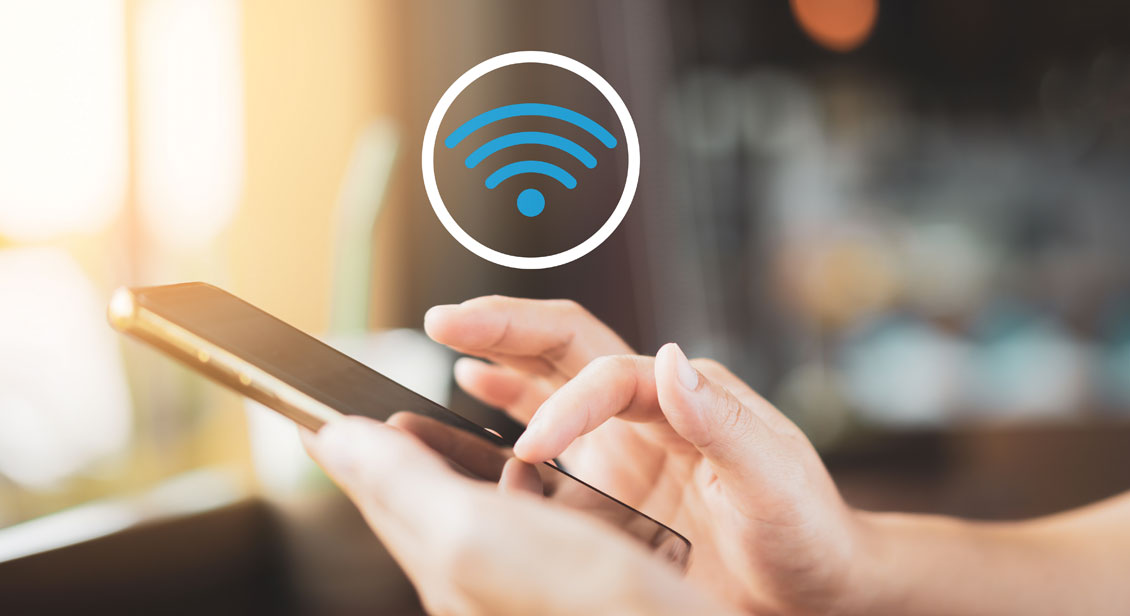General

How to save money on your mobile data
Remember when the price of calls and texts was the major deciding factor for choosing a mobile phone plan? Now the focus is on the amount of data available in a plan. And for a good reason too, since we rely on our phones to do so much more than just make calls and send messages.
There's almost no limit to what your smartphone can do with the help of a clever app, but apps use data – sometimes lots of it.
Data is just a way of measuring how much you use the internet each month, and the term used to measure data is gigabytes or GB. Knowing when to connect to the internet using the mobile data on your device or your home internet connection can save you money. Here are a few things you can do to help you stick to your monthly mobile data allowance.
1.Connect to Wi-Fi whenever possible
There are two ways your smartphone connects to the internet: via a mobile network or Wi-Fi. When your smartphone isn't connected to Wi-Fi, it automatically uses your mobile data. So set your phone to connect automatically to a trusted Wi-Fi network like your home, work or friend's place for when you visit. You can do this via your phone's Settings menu.
The Wi-Fi symbol next to the phone signal strength bars tells you when you're connected to a Wi-Fi network - it looks like a dot with curved lines radiating out above it.
Free Wi-Fi is available in public places like libraries, cafés, and shopping centres, but take care with what you do online when you're connected to public Wi-Fi. Stick to general web browsing and avoid doing online banking or anything else that involves entering personal information like credit card details or passwords.
If you want to see how your home and mobile data work together in a typical day, take a look at our short course: a day in the life of your data.
2. Avoid data-hungry activities
Everything you do online uses data. The amount of data you use depends on how you use your phone. For example, checking email on your phone and general web browsing (like reading the news or looking up a recipe) take up very little amounts of data.
If you listen to an hour's worth of music on your phone via a streaming app like Spotify, it uses around 1GB of data, and even more when you listen via Youtube. So if you have a small plan of say, 2GB per month, you will have used up half your data allowance in just one hour. A way of getting around this is to download your music to your mobile when you're connected to your home Wi-Fi. You can then listen to your music at any time, even when you're not connected to the internet. The same goes for podcasts: download to your phone when connected to your home Wi-Fi.
Watching videos on your phone uses even larger amounts of data. So if you have a small amount of data to use per month, avoid watching YouTube videos, Netflix or playing videos on Facebook. In fact, it's probably a good idea to set your Facebook settings to never automatically play videos (via the Settings menu) so you can save on data.
3. Control when apps use mobile data
In fact, you can switch off your mobile data completely via your phone's Setting menu. You can still make and receive calls and texts, but you won't be able to send or receive emails or do anything that requires data - which is generally anything internet related.
If you do switch off mobile data and find you need to use an app like Google maps or you want to check email, you can go back into Settings and switch it back on.
4. Pay only for what you need
Check the last few months' worth of your phone bills to see how much data you've been using. If you're paying for 20GB but find that you only use around 2GB per month then it's probably best to switch to a smaller plan to save money.
If you have no previous bills or information to go by, you can also use a data calculator (found on comparison sites like Finder and WhistleOut) to help you work out how much data you need. You will need to estimate how often you are likely to check your email or social media account or do other data-consuming things like watch videos on your device.
If all else fails
If you find you're still running out of data each month, it might be time to make some drastic changes to your online habits or pay for extra data. Sometimes a little more money can buy a lot more data. For example, at some local supermarkets you can buy a pre-paid plan with 2.5GB of data for $20 per month, but for $25 per month, you can get 25GB of data from the same phone service provider – that’s $5 more per month for 10 times as much data!
Speak to your internet service provider or take a look at their website to see whether they have any new plans. If it's time to renew your contract with your current provider, try asking for a better deal. And if that doesn't work, shop around.
More information
For more information on mobile data and how to use less data on your smartphone, take a look at the Australian Competition and Consumer Commission (ACCC) website.